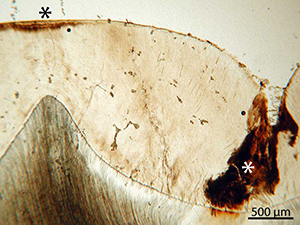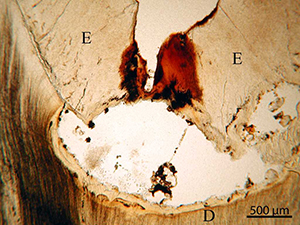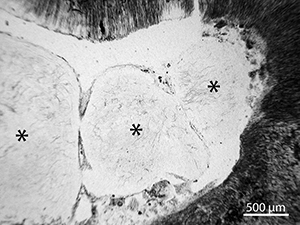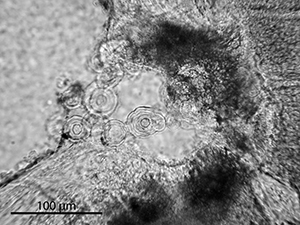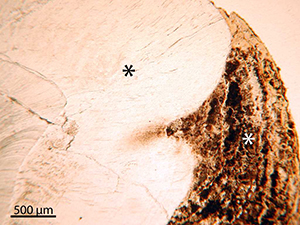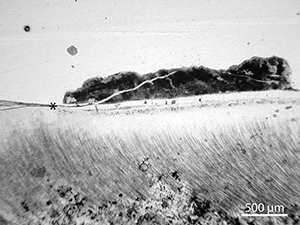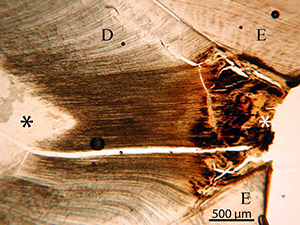
Several types of pathologies were observed and are illustrated here, to allow readers to identify this as non-diagenetic. It is not possible to establish, however, whether superficial etching of the enamel surface is pathology, or diagenetic in nature.

